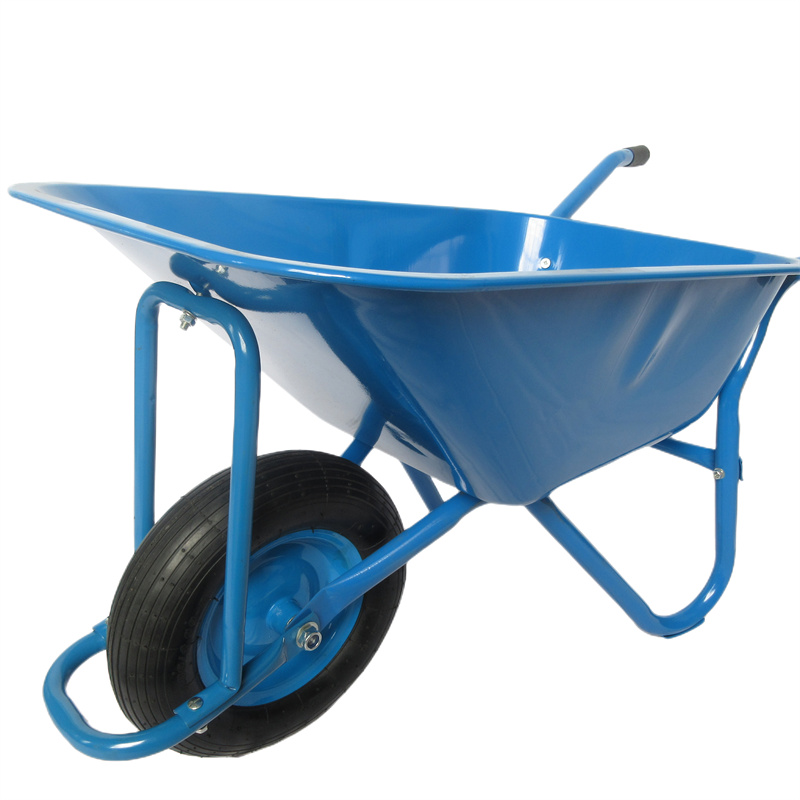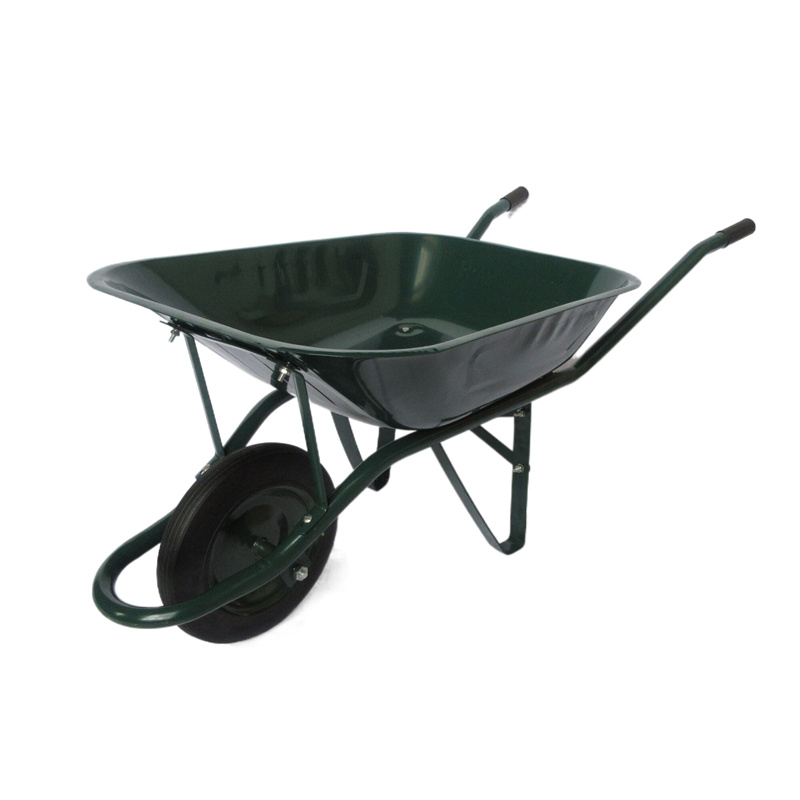- All
- Product Name
- Product Keyword
- Product Model
- Product Summary
- Product Description
- Multi Field Search
Please Choose Your Language
Views: 0 Author: Site Editor Publish Time: 2025-07-09 Origin: Site









Are you struggling to move heavy materials around your garden or yard? A good wheelbarrow can make all the difference. Choosing the right one can save time and effort.
In this post, QINGDAO YONGYI METAL PRODUCTS CO., LTD’ll discuss the factors you should consider when buying a wheelbarrow, from size and material to wheel types and maneuverability. By the end, you’ll have all the information you need to make an informed purchase.
When it comes to choosing a wheelbarrow, understanding the different types can help you pick the best one for your needs. Each type has its own benefits and limitations depending on the tasks you need to tackle. Below, we will look at the most common types of wheelbarrows and how they perform in various conditions.
A classic choice for many gardeners, the one-wheel wheelbarrow offers excellent maneuverability. It is ideal for navigating tight spaces or turning corners quickly.
● Pros: Easy to maneuver, great for confined spaces, and simple design.
● Cons: Can be unstable when carrying heavy loads, especially on uneven ground. It might also be trickier to balance with large or heavy items.
● Best Use Cases: Perfect for light to moderate gardening tasks, such as transporting small bags of soil, leaves, or plants.
Two-wheel wheelbarrows provide extra stability, making them an excellent choice for heavier loads and uneven terrains. The extra wheels make them more balanced, which is especially helpful for moving bulky or large items.
● Pros: More stable, better for rough terrains, and easy to balance with heavy loads.
● Cons: Not as easy to maneuver around tight corners or through narrow paths. The extra weight can make them more difficult to push.
● Best Use Cases: Ideal for larger gardens, transporting heavier materials like mulch, bricks, or garden tools.
Garden carts are often considered the best option for transporting large or heavy items. Their four-wheel design makes them incredibly stable and easy to use, but they lack the ability to easily dump the contents.
● Pros: Larger capacity, stable, and easier to unload with a dump feature.
● Cons: Harder to maneuver, and not as easy to lift or dump compared to traditional wheelbarrows.
● Best Use Cases: Perfect for hauling large amounts of materials like mulch, wood, and tools. Great for larger landscaping tasks.
For those with large-scale landscaping projects or heavy-duty construction tasks, a power wheelbarrow might be the best choice. These motorized wheelbarrows can carry heavy loads with minimal physical effort.
● Pros: Requires less physical effort, ideal for heavy-duty work.
● Cons: Expensive, bulky, and may be overkill for small or medium-sized gardens.
● Best Use Cases: Professional landscaping, construction, or any project that requires transporting large, heavy materials over long distances.

Choosing a wheelbarrow isn’t just about picking a style. You need to consider its size, material, wheels, and handle design to ensure it works for your needs.
When it comes to capacity, you’ll need to decide how much you plan to carry with your wheelbarrow. Smaller wheelbarrows are easier to maneuver, but they require more trips, while larger ones can hold more but may be harder to move.
Capacity | Use Case | Pros | Cons |
2-4 cubic feet | Small gardening tasks | Lightweight, easy to store | Requires more trips for large jobs |
5-6 cubic feet | General yard work | Balanced load, fewer trips | Heavier, harder to maneuver |
8 cubic feet | Heavy-duty tasks | Large capacity, fewer trips | Heavier, less agile |
Material plays a major role in the durability and weight of a wheelbarrow. The main options are steel and plastic.
● Steel: Strong and durable but can rust over time. Great for heavy-duty use like hauling bricks or concrete.
● Plastic: Lightweight, resistant to rust, and easy to maintain but might crack under excessive weight.
● Hybrid: Combines the benefits of both materials. A good option if you want something strong yet lightweight.
There are two main types of wheels: flat-free and pneumatic (rubber).
● Flat-Free Wheels: Ideal for all-terrain use as they won’t get punctured. However, they can feel less smooth compared to pneumatic wheels.
● Pneumatic (Rubber) Wheels: These wheels provide a smooth ride over rough terrain, but you need to keep them inflated and check for punctures regularly.
The size and tread of the wheels are also important to consider. Larger wheels are better for rough terrains, while smaller wheels can get stuck in thick grass or mud.
Handles come in a few different materials, including steel, wood, and plastic. Steel handles are the most common because they are durable and strong. Look for handles that are ergonomically designed for comfort, with rubber padding to reduce strain on your hands and back.

Stability and maneuverability are two critical aspects of wheelbarrow performance. Depending on the terrain and the materials you plan to move, you may want to prioritize one feature over the other.
If you plan to use your wheelbarrow on uneven, rocky, or soft ground, consider the wheel type and number of wheels. One-wheel wheelbarrows are easier to maneuver around obstacles but can be less stable on uneven surfaces. Two-wheel wheelbarrows provide more balance and stability but are harder to navigate through tight spaces.
Terrain Type | Best Wheelbarrow Type | Reason |
Rocky Terrain | Two-wheel wheelbarrow | Stability on uneven surfaces |
Soft Ground | Pneumatic wheelbarrow | Smooth rolling and easy navigation |
Tight Spaces | One-wheel wheelbarrow | Easier to turn around obstacles |
A wheelbarrow’s handling capacity is a combination of load distribution and stability. For example, a two-wheel design is much better at distributing weight evenly, making it less likely to tip over when transporting heavy loads.
● Load Distribution: Ensure that your wheelbarrow is balanced and capable of carrying a heavy load without tipping over.
● Maneuverability: Consider how easily you can turn and push the wheelbarrow, especially in tight spaces or on sloped terrain.
A good wheelbarrow should be able to withstand outdoor conditions and be easy to maintain. Here are some things to consider when it comes to durability and upkeep.
Galvanized steel or heavy-duty plastic are the best materials for resisting the elements. Galvanized steel doesn’t rust as easily, making it ideal for wet or humid environments. Make sure that the wheelbarrow you choose has weather-resistant features that will stand up to rain, snow, and intense sun exposure.
To keep your wheelbarrow in good shape, regular maintenance is essential. Here are a few tips:
● Tires: Check tire pressure regularly for pneumatic wheels. For flat-free wheels, ensure they are in good condition and free from cracks.
● Rust Prevention: Regularly clean the wheelbarrow and dry it after use. Store it in a dry, sheltered place to prevent rust.
● Loose Parts: Periodically check for loose screws or bolts and tighten them to ensure the wheelbarrow remains stable.
Wheelbarrows come in a wide price range, from budget-friendly options to high-end models. The price you pay will depend on factors like material, capacity, and special features.
Affordable wheelbarrows are usually made from plastic or lower-quality steel. While they may not last as long as pricier models, they can still serve well for lighter tasks around the garden.
Premium models typically feature galvanized steel, ergonomic handles, and high-quality wheels. These wheelbarrows are built to last longer and can handle heavy-duty work, but they come at a higher price.
Budget Option | Price Range | Pros | Cons |
Plastic wheelbarrow | $50-$100 | Lightweight, no rust | Less durable, can crack |
Steel wheelbarrow | $100-$200 | Strong and durable | Heavier, prone to rust |
Premium steel wheelbarrow | $200-$400 | High durability, ergonomic | Expensive, bulky |
When buying a wheelbarrow, consider the type, capacity, material, and wheel design. For small gardens, a one-wheel or compact design is ideal. Larger yards or heavy-duty tasks may require a two-wheel or even a power wheelbarrow. Invest wisely in a durable, well-suited wheelbarrow to ensure it lasts for years and meets your gardening needs.
A: A 4 cubic-foot wheelbarrow is usually ideal for smaller gardens, providing enough space without being too bulky.
A: A one-wheel wheelbarrow is best for maneuverability and tight spaces, while a two-wheel design offers greater stability for heavier loads.
A: Choose a galvanized steel or plastic wheelbarrow, and ensure proper storage away from wet conditions. Regularly check for cracks or damage.
A: Pneumatic tires are the best option for all-terrain use, as they provide smooth rolling on rough or uneven surfaces.